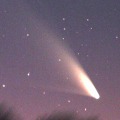
|
It passed the perihelion on Mar. 10, and brightened up to 0-1 mag. Now it is fading. But it is still bright as 2.3 mag (Mar. 20, Jakub Cerny). It locates extremely low in the evening and morning in the Northern Hemisphere. It is not observable in the Southern Hemisphere for a while after this.
Date(TT) R.A. (2000) Decl. Delta r Elong. m1 Best Time(A, h)
Mar. 23 0 34.89 23 16.5 1.202 0.486 23 3.0 19:38 (119, 1)
Mar. 30 0 32.19 33 54.3 1.259 0.640 30 4.0 4:24 (229, 2)
|
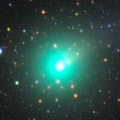
|
It approached to the sun down to 0.73 A.U. on Mar. 24. Now it is brightest, 4.7 mag (Mar. 11, Michael Mattiazzo). Now it locates extremely even in the Southern Hemisphere. In the Southern Hemisphere, it keeps locating low in the morning sky after this. It is not observable now in the Northern Hemisphere. But it becomes observable in May, and it keeps observable in good condition after that while fading gradually.
Date(TT) R.A. (2000) Decl. Delta r Elong. m1 Best Time(A, h)
Mar. 23 0 9.97 -26 31.3 1.454 0.732 27 4.7 19:38 ( 79,-33)
Mar. 30 0 10.44 -19 43.2 1.528 0.739 24 4.8 4:24 (276,-27)
|

|
It brightened up to 9.0 mag in 2012 autumn (Nov. 4, Juan Jose Gonzalez). Appearing in the morning sky in the Southern Hemisphere. It keeps observable in good condition while fading slowly after this. However, Michael Mattiazzo reported that it was fainter than 12 mag on Feb. 2, much fainter than predicted. In the Northern Hemisphere, it is hardly observable after 2013.
Date(TT) R.A. (2000) Decl. Delta r Elong. m1 Best Time(A, h)
Mar. 23 22 36.95 -42 45.5 2.567 2.045 48 9.5 4:35 (307,-23)
Mar. 30 23 1.78 -43 1.8 2.562 2.086 51 9.6 4:24 (307,-24)
|
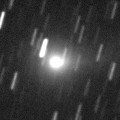
|
Long-lost comet for almost 200 years since 1827. Finally re-discovered by Rob Matson from SWAN images of mid November. Now it is 12.2 mag (Mar. 16, Katsumi Yoshimoto). In the Northern Hemisphere, it keeps observable in excellent condition while fading after this. In the Southern Hemisphere, it is only observable in low sky from February to March.
Date(TT) R.A. (2000) Decl. Delta r Elong. m1 Best Time(A, h)
Mar. 23 16 21.92 46 10.7 1.209 1.782 107 12.1 4:21 (180, 79)
Mar. 30 15 31.48 51 19.6 1.239 1.874 113 12.5 3:04 (180, 74)
|
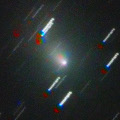
|
Now it is so bright as 11.1 mag (Mar. 9, Carlos Labordena). In the Northern Hemisphere, it keeps observable in good condition until April. It locates low in the Southern Hemisphere.
Date(TT) R.A. (2000) Decl. Delta r Elong. m1 Best Time(A, h)
Mar. 23 3 35.34 25 32.2 1.990 1.646 55 12.2 19:38 ( 97, 37)
Mar. 30 3 50.48 22 35.8 2.036 1.610 51 12.1 19:44 ( 97, 32)
|
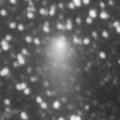
|
Now it is bright as 12.3 mag (Mar. 9, Marco Goiato). It is expected to be observable at 11-13 mag for a long time from 2012 summer to 2013 summer.
Date(TT) R.A. (2000) Decl. Delta r Elong. m1 Best Time(A, h)
Mar. 23 15 39.03 -9 40.1 2.028 2.746 126 12.4 3:38 ( 0, 45)
Mar. 30 15 27.24 -6 7.1 1.984 2.797 136 12.5 2:59 ( 0, 49)
|
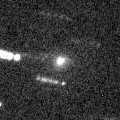
|
New bright comet. Now it is 12.5 mag and visible visually (Mar. 15, Alan Hale). It keeps locating in the morning sky for a long time after this. I will keep the current brightness for a long time in calculation. However, if the comet is in temporary outburst, it can fade out rapidly.
Date(TT) R.A. (2000) Decl. Delta r Elong. m1 Best Time(A, h)
Mar. 23 21 13.69 -0 24.2 1.961 1.419 43 12.5 4:35 (283, 17)
Mar. 30 21 36.10 1 4.0 1.971 1.441 44 12.6 4:24 (281, 17)
|

|
It brightened up to 11-12 mag in 2012. Now it is 12.3 mag (Mar. 23, Marco Goiato). It will be observable at 12-13 mag in good condition again in 2013.
Date(TT) R.A. (2000) Decl. Delta r Elong. m1 Best Time(A, h)
Mar. 23 15 0.18 -16 29.1 4.989 5.737 134 12.8 2:59 ( 0, 38)
Mar. 30 14 52.69 -16 8.2 4.925 5.760 143 12.8 2:24 ( 0, 39)
|

|
It brightened rapidly, and reached up to 12 mag in 2012. It is bright as 12.2 mag still now (Mar. 23, Marco Goiato). It keeps 12-14 mag until autumn. It locates somewhat low in the Northern Hemisphere.
Date(TT) R.A. (2000) Decl. Delta r Elong. m1 Best Time(A, h)
Mar. 23 19 12.02 -24 39.1 2.968 2.894 76 13.4 4:35 (323, 20)
Mar. 30 19 20.64 -24 54.2 2.881 2.898 81 13.4 4:24 (324, 21)
|

|
Now it is visible visually at 12.5 mag (Mar. 23, Marco Goiato).
Date(TT) R.A. (2000) Decl. Delta r Elong. m1 Best Time(A, h)
Mar. 23 14 6.05 -24 6.6 5.397 6.225 143 13.6 2:05 ( 0, 31)
Mar. 30 14 3.45 -24 2.1 5.337 6.224 150 13.6 1:35 ( 0, 31)
|
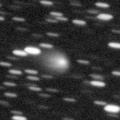
|
Now it is 13.7 mag (Jan. 11, Hiroshi Abe). It keeps bright at 13-14 mag for a long time until 2014. It keeps observable for a long time in the Northern Hemisphere. It will be observable also in the Southern Hemisphere after April.
Date(TT) R.A. (2000) Decl. Delta r Elong. m1 Best Time(A, h)
Mar. 23 21 17.54 29 59.1 6.507 5.914 49 13.6 4:35 (253, 32)
Mar. 30 21 18.81 30 14.3 6.456 5.911 53 13.6 4:24 (255, 35)
|

|
Now it is so bright as 11.8 mag (Mar. 9, Carlos Labordena). It will be fading gradually after this.
Date(TT) R.A. (2000) Decl. Delta r Elong. m1 Best Time(A, h)
Mar. 23 9 40.26 26 6.4 1.122 1.959 135 14.0 21:36 ( 0, 81)
Mar. 30 9 39.63 23 49.6 1.161 1.954 129 14.1 21:08 ( 0, 79)
|
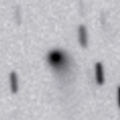
|
It keeps 13 mag and observable in good condition in the Northern Hemisphere for a long time from 2013 to 2014. Now it is 14.5 mag (Mar. 4, Sandor Szabo). It locates extremely low in the Southern Hemisphere.
Date(TT) R.A. (2000) Decl. Delta r Elong. m1 Best Time(A, h)
Mar. 23 9 54.03 47 44.6 3.639 4.267 123 14.1 21:49 (180, 77)
Mar. 30 9 43.03 48 35.8 3.698 4.231 115 14.1 21:10 (180, 76)
|

|
It kept as bright as 6-7 mag for a long time from 2011 summer to 2012 spring. Now it is fading. But it is bright as 15.2 mag still now (Mar. 4, Sandor Szabo).
Date(TT) R.A. (2000) Decl. Delta r Elong. m1 Best Time(A, h)
Mar. 23 8 16.65 -9 4.6 4.796 5.387 121 14.3 20:12 ( 0, 46)
Mar. 30 8 13.51 -8 42.5 4.950 5.449 115 14.4 19:44 ( 1, 46)
|

|
Big asteroid discovered in 1906. It suddenly showed the cometary activity on Dec. 11, 2010, probably due to an impact of a small object. It has already turned to be stellar. It is not observable now.
Date(TT) R.A. (2000) Decl. Delta r Elong. m1 Best Time(A, h)
Mar. 23 22 42.50 -19 52.5 3.581 2.759 29 14.5 4:35 (286,-12)
Mar. 30 22 53.94 -18 59.7 3.548 2.770 33 14.6 4:24 (286,-11)
|

|
Now it is 14.7 mag (Feb. 3, Jakub Cerny). It will be fading slowly after this. But it keeps 15 mag in 2013. It is observable in good condition in the Southern Hemisphere. It is not observable now in the Northern Hemisphere.
Date(TT) R.A. (2000) Decl. Delta r Elong. m1 Best Time(A, h)
Mar. 23 3 8.53 -33 21.9 6.877 6.350 54 14.7 19:38 ( 51, -4)
Mar. 30 3 11.87 -32 11.7 6.944 6.375 51 14.8 19:44 ( 56, -8)
|

|
Now it is 15.9 mag (Mar. 15, J. Gonzalez). It keeps bright as 13-14 mag for a long time from 2013 to 2014. It is a bit fainter than this ephemeris recently.
Date(TT) R.A. (2000) Decl. Delta r Elong. m1 Best Time(A, h)
Mar. 23 14 50.52 -11 7.2 2.704 3.514 138 15.0 2:49 ( 0, 44)
Mar. 30 14 48.21 -11 1.3 2.627 3.499 145 14.9 2:19 ( 0, 44)
|
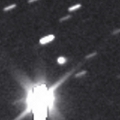
|
Now it is 14.9 mag (Mar. 4, Jakub Cerny). Already visible visually. It is expected to be a great comet in 2013 autumn when the comet approaches to the sun down to only 0.01 A.U. It keeps visible with naked eyes from November to January, and can be extremely bright as Venus or more at the highlight. The condition is excellent in the Northern Hemisphere. It keeps observable almost all through the period of brightening, at the highlight, and of fading. The condition is not good in the Southern Hemisphere. It is not observable at all the latter part of the highlight, and it keeps low all through the period.
Date(TT) R.A. (2000) Decl. Delta r Elong. m1 Best Time(A, h)
Mar. 23 6 39.52 30 54.0 4.143 4.364 96 15.0 19:38 ( 77, 76)
Mar. 30 6 37.90 30 39.1 4.183 4.282 88 14.9 19:44 ( 85, 69)
|

|
It reached up to 12 mag from autumn to winter. Now it is fading, but still bright as 14.3 mag (Mar. 5, Mitsunori Tsumura). It is not observable in the Southern Hemisphere. It will be unobservable soon also in the Northern Hemisphere.
Date(TT) R.A. (2000) Decl. Delta r Elong. m1 Best Time(A, h)
Mar. 23 2 21.29 17 37.1 4.065 3.319 36 15.1 19:38 ( 99, 18)
Mar. 30 2 32.12 17 41.9 4.144 3.340 32 15.2 19:44 (102, 13)
|
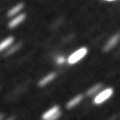
|
Now it is 15.3 mag (Mar. 4, Toshiyuki Takahashi). It will brighten up to 12 mag from summer to autumn. In the Northern Hemisphere, it is observable only until spring when the comet brightens up to 15 mag. In the Southern Hemisphere, it keeps unobservable until August. Then it keeps observable while fading gradually.
Date(TT) R.A. (2000) Decl. Delta r Elong. m1 Best Time(A, h)
Mar. 23 1 53.96 44 20.9 2.978 2.448 49 15.3 19:38 (128, 26)
Mar. 30 2 11.36 43 17.4 2.976 2.379 45 15.1 19:44 (128, 23)
|

|
Now it is 15.8 mag, brighter than expected (Feb. 4, Hidetaka Sato). It reaches up to 15 mag from spring to summer. It is observable in excellent condition in the Southern Hemisphere. It locates low in the Northern Hemisphere.
Date(TT) R.A. (2000) Decl. Delta r Elong. m1 Best Time(A, h)
Mar. 23 16 10.56 -49 9.0 2.934 3.399 109 15.3 4:10 ( 0, 6)
Mar. 30 15 55.70 -48 38.8 2.805 3.389 117 15.2 3:27 ( 0, 6)
|
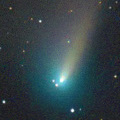
|
It approached to the earth down to 0.3 A.U. and brightened up to 7-8 mag from late December to early January. However, it will go away from the earth and fade out rapidly after this. It has already faded down to 15.3 mag (Mar. 3, Mitsunori Tsumura). It keeps observable in good condition in the Southern Hemisphere after this. It will be unobservable soon in the Northern Hemisphere.
Date(TT) R.A. (2000) Decl. Delta r Elong. m1 Best Time(A, h)
Mar. 23 4 28.76 -17 39.6 2.243 2.062 66 15.3 19:38 ( 49, 20)
Mar. 30 4 35.13 -18 1.2 2.397 2.141 63 15.7 19:44 ( 54, 16)
|
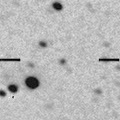
|
Now it is 16.1 mag (Mar. 18, Catalina Sky Survey). It is expected to brighten up to 5-6 mag in 2014 autumn. In 2013, it keeps observable in good condition until autumn when it brigthens up to 13-14 mag.
Date(TT) R.A. (2000) Decl. Delta r Elong. m1 Best Time(A, h)
Mar. 23 17 32.28 13 39.5 6.029 6.256 98 15.9 4:35 (326, 65)
Mar. 30 17 30.71 14 28.5 5.870 6.194 104 15.8 4:24 (336, 68)
|
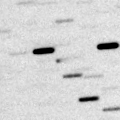
|
Now it is 16.2 mag (Feb. 16, Ken-ichi Kadota). It keeps observable at 16 mag in the morning sky from February to April.
Date(TT) R.A. (2000) Decl. Delta r Elong. m1 Best Time(A, h)
Mar. 23 19 52.94 -12 4.4 1.701 1.562 64 15.9 4:35 (306, 24)
Mar. 30 20 11.38 -11 8.8 1.674 1.579 66 16.0 4:24 (305, 24)
|
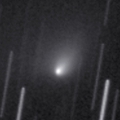
|
It brightened up to 13.7 mag and became visible visually in winter (Dec. 23, Juan Jose Gonzalez). Now it is fading. It has already faded down to 16.7 mag (Mar. 4, Toshiyuki Takahashi). It locates low in the Southern Hemisphere. It will be too low in the evening in late April also in the Northern Hemisphere.
Date(TT) R.A. (2000) Decl. Delta r Elong. m1 Best Time(A, h)
Mar. 23 4 27.73 27 17.7 2.678 2.471 67 16.1 19:38 ( 93, 48)
Mar. 30 4 35.68 25 14.0 2.816 2.503 61 16.2 19:44 ( 94, 42)
|

|
Now it is 16.1 mag (Mar. 4, Hidetaka Sato). In the Southern Hemisphere, it will be observable at 15-16 mag in good condition for a long time until summer. It is not observable at all in the Northern Hemisphere.
Date(TT) R.A. (2000) Decl. Delta r Elong. m1 Best Time(A, h)
Mar. 23 2 36.83 -56 13.4 4.650 4.316 64 16.2 19:38 ( 36,-22)
Mar. 30 2 49.60 -54 36.2 4.674 4.342 64 16.2 19:44 ( 39,-23)
|
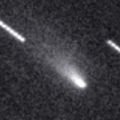
|
Got brighter than expected after the outburst on Jan. 24. It brightened up to 9.2 mag on Feb. 4 (Michael Mattiazzo). However, it suddenly faded down to 10.5 mag and got diffuse on Feb. 5 (Michael Mattiazzo). It approached to the Sun down to 0.3 A.U. on Feb. 24. In the Northern Hemisphere, it is appearing in the morning sky. Juro Kobayashi succeeded to catch the comet at 13.5 mag on Mar. 8. However, Hidetaka Sato failed to catch the comet on Mar. 11, fainter than 17.5 mag. The comet can be already disintegrated. It is not observable in the Southern Hemisphere.
Date(TT) R.A. (2000) Decl. Delta r Elong. m1 Best Time(A, h)
Mar. 23 21 39.34 21 18.8 1.176 0.791 41 16.3 4:35 (260, 23)
Mar. 30 21 51.15 29 16.1 1.286 0.936 46 17.4 4:24 (253, 28)
|

|
Now it is 15.9 mag (Mar. 15, P. C. Sherrod). It will be observable at 16-17 mag for a long time from 2013 to 2014.
Date(TT) R.A. (2000) Decl. Delta r Elong. m1 Best Time(A, h)
Mar. 23 12 5.34 6 5.4 2.895 3.886 172 16.5 0:05 ( 0, 61)
Mar. 30 12 1.53 6 18.8 2.900 3.880 167 16.5 23:29 ( 0, 61)
|
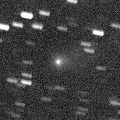
|
It brightened up to 15.5 mag in 2012 summer. Although it has already passed the perihelion, it tends to become brightest after the perihelion passage. It will be observabel at 16 mag again in 2013 summer. Appearing in the morning sky in the Southern Hemisphere. But it has not been observed yet.
Date(TT) R.A. (2000) Decl. Delta r Elong. m1 Best Time(A, h)
Mar. 23 21 23.62 -20 5.7 4.020 3.397 45 16.6 4:35 (297, 3)
Mar. 30 21 32.55 -19 38.7 3.961 3.411 50 16.6 4:24 (298, 4)
|
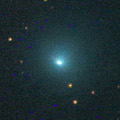
|
First return of a new periodic comet discovered in 1994. It brightened rapidly and reached up to 10.6 mag (Dec. 13, Katsumi Yoshimoto). Now it is fading. It has already faded down to 15.3 mag (Mar. 14, Mitsunori Tsumura). It will be fainter than 18 mag in April.
Date(TT) R.A. (2000) Decl. Delta r Elong. m1 Best Time(A, h)
Mar. 23 4 41.85 -2 32.5 2.034 1.907 68 16.7 19:38 ( 58, 34)
Mar. 30 4 58.45 -1 58.7 2.146 1.970 66 17.1 19:44 ( 62, 31)
|
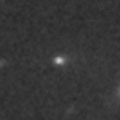
|
Now it is 16.5 mag (Mar. 12, P. C. Sherrod). It keeps observable in good condition at 17 mag until June. It locates somewhat low in the Southern Hemisphere.
Date(TT) R.A. (2000) Decl. Delta r Elong. m1 Best Time(A, h)
Mar. 23 8 55.90 22 25.1 1.239 2.009 127 17.0 20:52 ( 0, 77)
Mar. 30 8 59.06 22 25.0 1.284 1.995 121 17.0 20:28 ( 0, 77)
|

|
It is expected to brighten up to 11 mag and become observable in excellent condition in 2014 spring. Now it is 16.7 mag (Mar. 12, P. C. Sherrod). In the Northern Hemisphere, it keeps observable in good condition until early summer. It locates low in the Southern Hemisphere.
Date(TT) R.A. (2000) Decl. Delta r Elong. m1 Best Time(A, h)
Mar. 23 8 36.47 40 52.2 3.721 4.259 116 17.1 20:32 (180, 84)
Mar. 30 8 34.00 40 58.9 3.753 4.194 109 17.1 20:02 (180, 84)
|
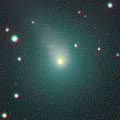
|
It brightened much faster than expected, and reached up to 10.0 mag in summer (Aug. 9, Juan Jose Gonzalez). Now it is fading. It has already faded down to 17.4 mag (Mar. 17, P. C. Sherrod). It will be fainter than 18 mag soon.
Date(TT) R.A. (2000) Decl. Delta r Elong. m1 Best Time(A, h)
Mar. 23 6 32.32 3 25.5 3.215 3.461 95 17.2 19:38 ( 31, 54)
Mar. 30 6 31.96 2 55.7 3.386 3.518 89 17.4 19:44 ( 43, 50)
|

|
It was discovered at 15 mag in late December. It must have been bright as 13-14 mag and observable in good condition from spring to autumn in the Southern Hemisphere. But it was not discovered. Now it is fading. It has already faded down to 16.6 mag (Mar. 4, Hidetaka Sato). It will be fainter than 18 mag in April, and keeps observable in good condition.
Date(TT) R.A. (2000) Decl. Delta r Elong. m1 Best Time(A, h)
Mar. 23 5 37.34 -17 31.4 2.985 3.027 82 17.2 19:38 ( 35, 30)
Mar. 30 5 43.52 -15 0.1 3.122 3.088 78 17.4 19:44 ( 43, 28)
|
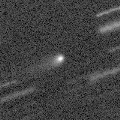
|
Now it is 17.3 mag (Mar. 16, Catalina Sky Survey). It brightened up to 16.5 mag in 2012. It will be observable in good condition again at 17.5 mag in 2013 spring.
Date(TT) R.A. (2000) Decl. Delta r Elong. m1 Best Time(A, h)
Mar. 23 13 33.44 6 44.8 5.113 6.046 157 17.4 1:33 ( 0, 62)
Mar. 30 13 25.61 7 21.9 5.102 6.064 163 17.4 0:57 ( 0, 62)
|

|
It was observed around 20 mag in 2012 spring. But it has not been observed recently. It will be observable at 17.5 mag from spring to summer.
Date(TT) R.A. (2000) Decl. Delta r Elong. m1 Best Time(A, h)
Mar. 23 18 3.07 -23 18.3 2.395 2.620 91 17.8 4:35 (337, 28)
Mar. 30 18 10.35 -22 45.8 2.308 2.622 96 17.7 4:24 (340, 29)
|

|
First return of a new periodic comet discovered in 2005. It will be observable at 17 mag for a long time from 2013 to 2014. However, it has not been recovered yet. Not it is fainter than 19.5 mag (Feb. 21, Martin Masek).
Date(TT) R.A. (2000) Decl. Delta r Elong. m1 Best Time(A, h)
Mar. 23 17 16.64 -14 36.5 2.968 3.333 102 17.8 4:35 (347, 39)
Mar. 30 17 19.85 -14 25.7 2.864 3.324 108 17.7 4:24 (352, 40)
|
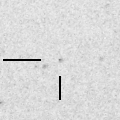
|
Now it is 17.9 mag (Feb. 10, Hidetaka Sato). It keeps observable in good condition at 17 mag from spring to summer.
Date(TT) R.A. (2000) Decl. Delta r Elong. m1 Best Time(A, h)
Mar. 23 18 21.80 -16 0.4 2.775 2.900 87 17.8 4:35 (329, 33)
Mar. 30 18 29.05 -15 15.8 2.683 2.898 92 17.8 4:24 (332, 35)
|

|
It was predicted to be already 17 mag. But actually, it is 21.2 mag, much fainter than predicted by 4 mag (Mar. 15, Jean-Francois Soulier). It was expected to brighten up to 14 mag and to be observable in excellent condition in summer. However, it can be fainter than 18 mag.
Date(TT) R.A. (2000) Decl. Delta r Elong. m1 Best Time(A, h)
Mar. 23 15 18.11 -0 27.1 1.309 2.115 132 21.1 3:17 ( 0, 54)
Mar. 30 15 20.92 0 13.4 1.224 2.078 138 20.8 2:52 ( 0, 55)
|
|
![]()
 C/2012 K5 ( LINEAR )
C/2012 K5 ( LINEAR ) C/2012 K1 ( PanSTARRS )
C/2012 K1 ( PanSTARRS ) 125P/Spacewatch
125P/Spacewatch C/2012 L1 ( LINEAR )
C/2012 L1 ( LINEAR ) C/2011 O1 ( LINEAR )
C/2011 O1 ( LINEAR ) C/2012 T5 ( Bressi )
C/2012 T5 ( Bressi ) P/2012 B1 ( PanSTARRS )
P/2012 B1 ( PanSTARRS ) 152P/Helin-Lawrence
152P/Helin-Lawrence 262P/2012 K7 ( McNaught-Russell )
262P/2012 K7 ( McNaught-Russell ) 175P/Hergenrother
175P/Hergenrother C/2012 X1 ( LINEAR )
C/2012 X1 ( LINEAR ) C/2011 UF305 ( LINEAR )
C/2011 UF305 ( LINEAR ) C/2012 Y3 ( McNaught )
C/2012 Y3 ( McNaught ) C/2010 R1 ( LINEAR )
C/2010 R1 ( LINEAR ) 91P/Russell 3
91P/Russell 3 P/2005 L1 ( McNaught )
P/2005 L1 ( McNaught ) P/2012 F2 ( PanSTARRS )
P/2012 F2 ( PanSTARRS ) 98P/Takamizawa
98P/Takamizawa![]()

































